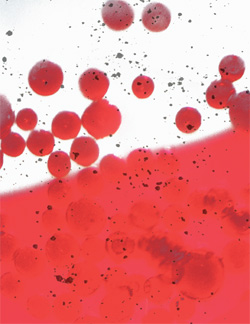Massive Change

‘Massive Change: The Future of Global Design’ is an exhibition that’s almost impossible to dislike. As with the volunteers on the street who ask, ‘Do you have a moment for the environment?’, saying ‘no’ to ‘Massive Change’ inspires either guilt or a realization of one’s own hard-hearted cynicism. After all, what’s not to support? Designed and curated by the Bruce Mau Design studio and the Institute without Boundaries, ‘Massive Change’ exists as a book, a website and an exhibition (first commissioned and organized by the Vancouver Art Gallery), which, taken together, constitute a manifesto. It states that design can change our world for the better, not only locally, through individual materials and objects, but also globally, by effecting economies of development and exchange. The germ of ‘Massive Change’ is an observation by the economic historian Arnold Toynbee that ‘the twentieth century will be chiefly remembered by future generations not as an era of political conflicts or technical innovations, but as an age when human society dared to think of the welfare of the whole human race as a practical objective’.
Mau proposes that design is the tool by which this practical objective can and will be realized. However, he doesn’t limit its definition to such disciplines as architecture or product design, but places just about every aspect of human innovation under its aegis. Design swells to fit a series of ten economies: urban, movement, information, energy, image, market, materials, military, manufacturing and living. Graphic design, for example, is categorized as ‘Information’, while genetic engineering takes part in the ‘Living’ economy. Mau proposes that this new definition of design ‘doesn’t care what design looks like’, but focuses instead on the ‘aesthetic of capacity’.
Mau conveys these ideas through an avalanche of text and many objects. The exhibition begins with a graphic breakdown of human innovation throughout history. Organized in horizontal bands as a textual timeline, dates, inventions and developments grow thicker and denser as they progress from left to right, finally crowding out all white space on the wall. The show can be seen as a magnification of the teeming far-right side of this diagram. Prefaced by the question ‘Now that we can do anything, what will we do?’, it amplifies the importance of personal, environmental and global accountability in the design of possible solutions to trans-national problems.
Countervailing feelings of technological awe, guilt and fear were coerced throughout the show. (While I felt virtuous for driving to the museum in a car averaging 28 miles per gallon, when faced with the array of hyper-efficient vehicles in the ‘Movement’ economy section, I soon discovered I was nothing more than a profligate gas-guzzler.) In the ‘Living’ economy room the many developments of bio-engineering were catalogued. Enlarged farm-produced trout, naked chickens and modified pest-resistant golden rice all demonstrated the potential and pitfalls of human control over nature. Another room documented current advances in imaging technologies by papering myriad representations of our world – from body-penetrating ultrasound stills to personal digital mobile phone snapshots – across both walls and floor. Having viewers walk across these wonders, the exhibition then solicited visitors to judge the design advancements around them by asking, ‘Should we be doing this?’ The ‘yes/no’ responses were tallied through the accumulated piles of yellow papers in Perspex containers.
Alongside the enthusiasms, muted anxieties and implied finger-wagging of ‘Massive Change’, this populist conceit also suggests that Bruce Mau Design is asking different sorts of questions: those answered by the bigger tally boxes of museum attendance, website hits and book purchases. Who is interested? Who is convinced? Who is converted? Before this exhibition, and before Mau and Rem Koolhaas’ vastly influential S, M, L, XL (1996), Bruce Mau Design excelled in branding and identity research. Mau writes: ‘If you put together all that’s going on at the edges of culture and technology, you get a wildly unexpected view of the future. “Massive Change” charts this terrain.’ The goal of ‘Massive Change’ – roadshow, website and book – is to push those edges toward the centre, to take them from radical fringe to mall, by acting as the forecaster, catalyst and propagator of possibility. But, in moulding possibilities into realities, the key may be learning why we choose one thing over another: why we shrink from the featherless chicken but embrace the gigantic SUV with its synthetic-voiced onboard navigation system, why urbanism succeeds here and fails there, why we buy things only to throw them out. In addition to ‘charting the terrain’ of contemporary design, ‘Massive Change’ also maps the trajectory of human whim, desire and abject need, questioning whether the power of design lies within the object or within ourselves.















